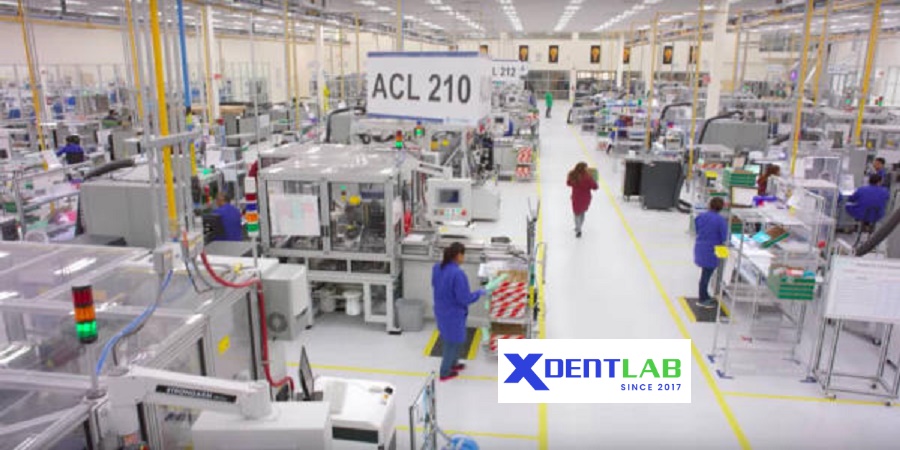
Aligners manufacturing company xdentlab.com Dental aligners represent a significant advancement in orthodontic treatment, providing patients with an alternative to traditional metal braces. These clear, removable plastic trays are custom-made to fit snugly over the teeth, gradually shifting them into the desired position over time. The increase in demand for aligners can be attributed to their numerous advantages, both in terms of functionality and aesthetics.
Introduction to Aligners
One of the primary benefits of dental aligners is their comfort. Unlike conventional braces, which can cause discomfort and irritation due to wires and brackets, aligners are smooth and less likely to trigger mouth sores. Patients often report a more pleasant experience throughout their treatment journey, as aligners offer a softer approach to straightening teeth. Moreover, the capacity to remove aligners allows for easier oral hygiene maintenance, facilitating the brushing and flossing routines that are essential for dental health.
Aesthetics also play a crucial role in the rising popularity of aligners. Many individuals, particularly adults and teenagers, prefer the discreet appearance of clear aligners over metal braces. The invisibility of these trays allows patients to undergo orthodontic treatment without feeling self-conscious, significantly influencing their social interactions and self-esteem. This aesthetic appeal has prompted an uptick in patients seeking such solutions, highlighting the evolving landscape of orthodontics where appearance matters greatly.
The treatment duration is another important factor driving the shift towards aligners. In many cases, aligners may yield faster results than traditional braces due to the ability to tailor the treatment plan using advanced technology. This combination of comfort, aesthetics, and efficiency marks the growing importance of aligners in contemporary orthodontics, setting the foundation for an understanding of the manufacturing companies that play a pivotal role in this industry.
The Aligners Manufacturing Process
The manufacturing process of dental aligners is a sophisticated procedure that integrates advanced technologies to ensure precision and efficiency. This process typically begins with a thorough examination and consultation, where the dental professional assesses the patient’s orthodontic needs. Following this, a comprehensive digital scan of the patient’s teeth is performed. This scan captures the intricacies of the dental structure, allowing for accurate modeling.
Once the digital impressions are collected, Vietnam dental laboratory they are transformed into 3D models through state-of-the-art computer-aided design (CAD) software. This software enables orthodontists and technicians to simulate the desired tooth movements and create a series of aligners that will sequentially adjust the teeth to their ideal positions. Each stage of this simulation is crucial, as it aims to personalize the treatment according to the individual’s dental anatomy.
After the digital model is finalized, the next phase involves the actual fabricating of the aligner trays. Advanced 3D printing technology plays a pivotal role at this stage. Using biocompatible materials, the trays are printed layer by layer, allowing for high accuracy and a better fit for the patient. This manufacturing method not only streamlines the production process but also reduces the time required to produce each aligner, which is beneficial for both patients and practitioners.
Finally, the thermoplastic sheets are vacuum-formed over the printed models to create the final aligners. The completed trays undergo thorough quality checks to ensure that they meet the required standards before being dispatched for patient use. This meticulous process reflects the commitment of aligners manufacturing companies to leverage innovative techniques for optimal outcomes in orthodontic treatments.
Key Technologies Used in Aligners Production
The evolution of aligners manufacturing has been propelled by numerous technological advancements that significantly enhance the quality, precision, and effectiveness of dental aligners. Among the pivotal technologies employed are 3D scanning, advanced modeling software, and innovative production techniques, which together streamline the process from initial assessment to final product delivery.
3D scanning technology plays a crucial role in capturing dental impressions with remarkable accuracy. Traditional methods involved cumbersome molds that could yield inconsistent results. In contrast, 3D scanning creates a digital representation of the teeth, allowing for precise measurements and alignment. This digital data serves as the foundation for developing customized aligners that closely fit the patient’s dental anatomy.
Complementing 3D scanning, sophisticated modeling software is utilized to design the aligners. This software enables dental professionals to simulate the movement of teeth, facilitating the creation of a tailored treatment plan. By utilizing algorithms and predictive modeling, these systems can accurately forecast the outcome of treatment, ensuring that the finalized aligners will effectively guide teeth into their desired positions.
The choice of materials is another vital aspect of aligner production. Most aligners are crafted from high-quality thermoplastics, Vietnam dental laboratories known for their durability and flexibility. These materials not only provide comfort during wear but also possess the necessary properties to withstand the forces exerted during treatment. The integration of 3D printing technology further enhances production efficiency, allowing for rapid prototyping and customization while reducing waste.
Overall, the combination of 3D scanning, advanced modeling software, quality materials, and production techniques contributes significantly to the quality and efficacy of dental aligners. As these technologies continue to evolve, so too will the capabilities of aligners manufacturing, promising better outcomes for patients seeking orthodontic treatment.
Leading Companies in the Aligners Manufacturing Industry
The landscape of aligners manufacturing has evolved significantly over the years, marked by the emergence of several prominent companies that have reshaped the dental market. Among these, Invisalign, developed by Align Technology, stands as a pioneer in the field of transparent aligner therapy. Established in 1997, Invisalign revolutionized orthodontics by introducing the first clear aligner system, effectively catering to patients seeking a more aesthetic alternative to traditional braces. With a robust presence in over 100 countries, Align Technology continues to innovate, launching new products that incorporate advanced 3D printing technologies and patient software for a more tailored treatment process.
Another noteworthy contender in the aligners manufacturing sphere is SmileDirectClub. Founded in 2014, this direct-to-consumer company has gained traction by offering orthodontic care without the necessity of in-person orthodontist visits. SmileDirectClub leverages teledentistry to provide accessible and cost-effective solutions, appealing to a demographic seeking convenience. With a network of licensed dentists and orthodontists who oversee treatment plans, the company ensures compliance with treatment protocols while maintaining affordability.
Related articles: introduce Global Clear Aligner Manufacturers
In addition to these giants, other players such as Byte and Candid have emerged, contributing to a competitive landscape that emphasizes innovation and customer-centric solutions. Byte, for instance, distinguishes itself by utilizing a proprietary teeth-straightening system emphasizing accelerated treatment times, while Candid focuses on combining traditional orthodontic expertise with a modern approach to aligner therapy. Together, these companies showcase the diversity and competitive nature of the aligners manufacturing industry, illustrating different pathways through which dental technology can evolve. As advancements continue, the market is expected to grow, providing patients with a variety of options tailored to their individual needs.
